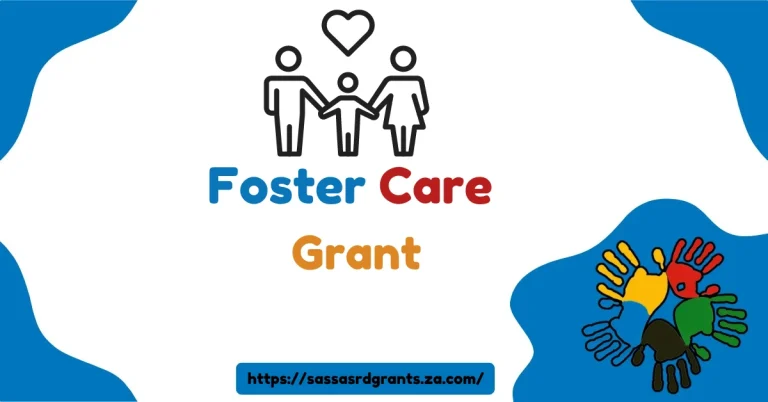How Retailers Benefit from the R370 Grant in South Africa?
As someone who’s closely followed the economic changes in South Africa, I can’t help but notice the widespread impact of the R370 Social Relief of Distress (SRD) grant.
While the primary intent of this financial aid is to support individuals in difficult economic conditions, its effects go beyond the beneficiaries.
The grant has become a critical driver in the retail sector, as increased consumer spending has benefitted retailers, especially in low-income communities.
Let’s take a closer look at how this grant works, its reach, and the surprising ways it has influenced local businesses across South Africa.
How Retailers Benefit from the R370 Grant in South Africa?(Quick Answer)
The R370 grant benefits both South Africans in need and local retailers. By providing essential financial support, the grant drives consumer spending on necessities, boosting sales and foot traffic for supermarkets, small shops, and community stores. Retailers benefit further by adapting their offerings, introducing loyalty programs, and partnering with the government for grant disbursement. This economic boost strengthens small businesses and helps local economies thrive, especially in low-income areas.
Understanding the R370 Grant
The R370 SRD grant is an expansion of the R350 relief measure initially introduced to assist South Africans facing financial challenges due to the COVID-19 pandemic.
Designed to support those without a stable income, this grant helps people cover essential expenses, from groceries to utilities.
The reach of this program is vast, with approximately 9.8 million people currently benefiting from the R370 SRD grant.
Each month, millions of recipients receive this essential support, pumping billions of rands into the economy, which has a direct effect on consumer behavior, particularly in the retail sector.
How Many People Are Benefiting from the R370 Grant?
The grant has proven crucial for nearly 7.8 million South Africans who rely on this income. For many, it’s a vital source of funding to help them manage basic living expenses, thus directly increasing the flow of cash into local retail businesses.
This increase in disposable income has a ripple effect across various sectors, as beneficiaries spend primarily on essential goods.
This heightened spending has provided retailers, especially those in low-income areas, with a steady customer base, boosting foot traffic and increasing their turnover rates.
How Retailers Benefit from the R370 Grant
1. Boost in Consumer Spending:
Each month, millions of beneficiaries receive their R370 grants, which is often used immediately to purchase essentials like food, toiletries, and household supplies.
Retailers selling these items benefit immensely from the predictable influx of cash. This increased spending brings higher foot traffic to stores, which positively impacts sales and ensures a steady income for businesses.
Local supermarkets and community stores are particularly seeing increased demand, and this trend has brought growth to businesses that might have otherwise struggled.
2. Support for Small and Local Retailers:
In rural areas and townships, small retailers, often known as spaza shops, are reaping the rewards of the R370 grant.
Many beneficiaries choose to shop close to home, creating a supportive loop within their local economies.
By spending in their communities, recipients help sustain small businesses that form the backbone of these areas.
This preference for community-based stores is vital for the survival of these retailers, especially as larger stores and online shopping options become more accessible.
3. Retailers Adapting Product Offerings:
The predictable demand created by the R370 grant has led many retailers to adjust their stock. By offering affordable product options, retailers make it easier for beneficiaries to maximize their spending.
In some cases, stores provide discounts or promotions specifically aimed at grant recipients, which keeps prices competitive and attracts a loyal customer base.
This targeted marketing approach has led to higher sales volumes, especially for basic goods, and has encouraged retailers to cater to the unique needs of this customer segment.
4. Strengthened Loyalty Programs:
Large retail chains have leveraged the steady flow of grant funds by enhancing their loyalty programs.
Through special offers and discounts for regular customers, retailers have found ways to build long-term relationships with grant recipients.
These loyalty incentives have been instrumental in driving repeat purchases, even beyond grant payment days, as customers feel encouraged to shop where they find the best value.
This strategy not only benefits retailers by maintaining a consistent revenue stream but also provides customers with added value on essential items.
Challenges for Retailers Amid Growing Demand
While the R370 grant has positively impacted retailers, it comes with certain challenges as well. The spike in demand for basic goods requires businesses to stay agile in managing supply chains and meeting customer expectations.
1. Supply Chain Management:
With increased demand, retailers must ensure they have sufficient stock, particularly around the time when grants are distributed.
This calls for efficient supply chain management to avoid stock shortages and ensure that stores remain well-stocked, especially with essential goods.
Failure to meet demand could result in lost sales and frustrated customers.
2. Pricing Pressures:
Grant recipients are often budget-conscious, meaning retailers face pressure to keep prices competitive while still maintaining profitability.
Striking a balance between affordable pricing and sustainable profits is crucial for retailers who want to retain their customer base without compromising on quality.
3. Security Concerns on Grant Payment Days:
The increase in foot traffic on grant disbursement days can pose security challenges for larger stores.
Retailers may need to implement additional security measures and adopt crowd management strategies to handle the increased number of shoppers.
By doing so, they can ensure a safe and pleasant shopping experience for all customers.
Partnerships Between Government and Retailers
To make grant disbursement more convenient, the South African government has partnered with major retail chains, allowing beneficiaries to collect their grant funds directly at retail locations.
This arrangement is beneficial for both parties: recipients can access their funds easily, and retailers benefit from the increased foot traffic and subsequent sales.
Some stores even offer incentives like vouchers or discounts to encourage recipients to shop after collecting their grants.
This mutually beneficial relationship strengthens retailers’ customer base while streamlining the grant collection process.
The Future of the R370 Grant and Its Impact on Retail
As the government evaluates the future of the R370 SRD grant, both retailers and beneficiaries are left wondering about its long-term implications.
Initially introduced as a temporary measure, the grant’s success in providing financial support and boosting retail sales may prompt discussions about extending or potentially expanding the program.
Sustainability of the R370 Grant:
If the R370 grant becomes permanent, it could provide a continued boost to the retail sector, especially for businesses selling essential goods.
However, any future adjustments to the grant—such as eligibility criteria, amount, or duration—could require retailers to adapt their inventory management and pricing strategies accordingly.
Innovation in Retail Strategies:
With a steady customer base reliant on the R370 grant, some retailers may invest in innovative models tailored to low-income consumers.
This could include introducing affordable product bundles, offering flexible payment options, or creating loyalty programs specifically designed to meet the needs of grant beneficiaries.
Such strategies would allow retailers to remain competitive and ensure that they continue to meet the evolving needs of their customers.
Frequently Asked Questions (FAQ’s)
1. What is the R370 SRD grant?
The R370 Social Relief of Distress (SRD) grant is a government aid program that provides temporary financial support to unemployed South Africans who are not receiving any other form of social grant or unemployment insurance benefits.
2. How many South Africans receive the R370 grant?
Currently, approximately 7.8 million South Africans benefit from the R370 SRD grant.
3. How does the R370 grant impact the retail sector?
The R370 grant drives increased spending on essential goods, boosting foot traffic and sales in supermarkets, small stores, and local businesses, especially in low-income areas.
4. Will the R370 grant continue in the future?
While the R370 grant was initially temporary, discussions about poverty alleviation and economic support may prompt the government to consider extending or modifying the program.
Conclusion
The R370 grant provides a crucial financial lifeline for millions of South Africans, but its impact extends beyond individual recipients to positively influence the retail sector.
As retailers adapt to the increased spending power brought about by the grant, they continue to drive economic activity in communities across the country.
Whether the R370 grant is extended or transformed into a more permanent solution, its role in supporting both individuals and local businesses cannot be underestimated.
Retailers must stay flexible, adjusting their offerings to meet the needs of this essential customer base while navigating the evolving landscape of South Africa’s economy.






